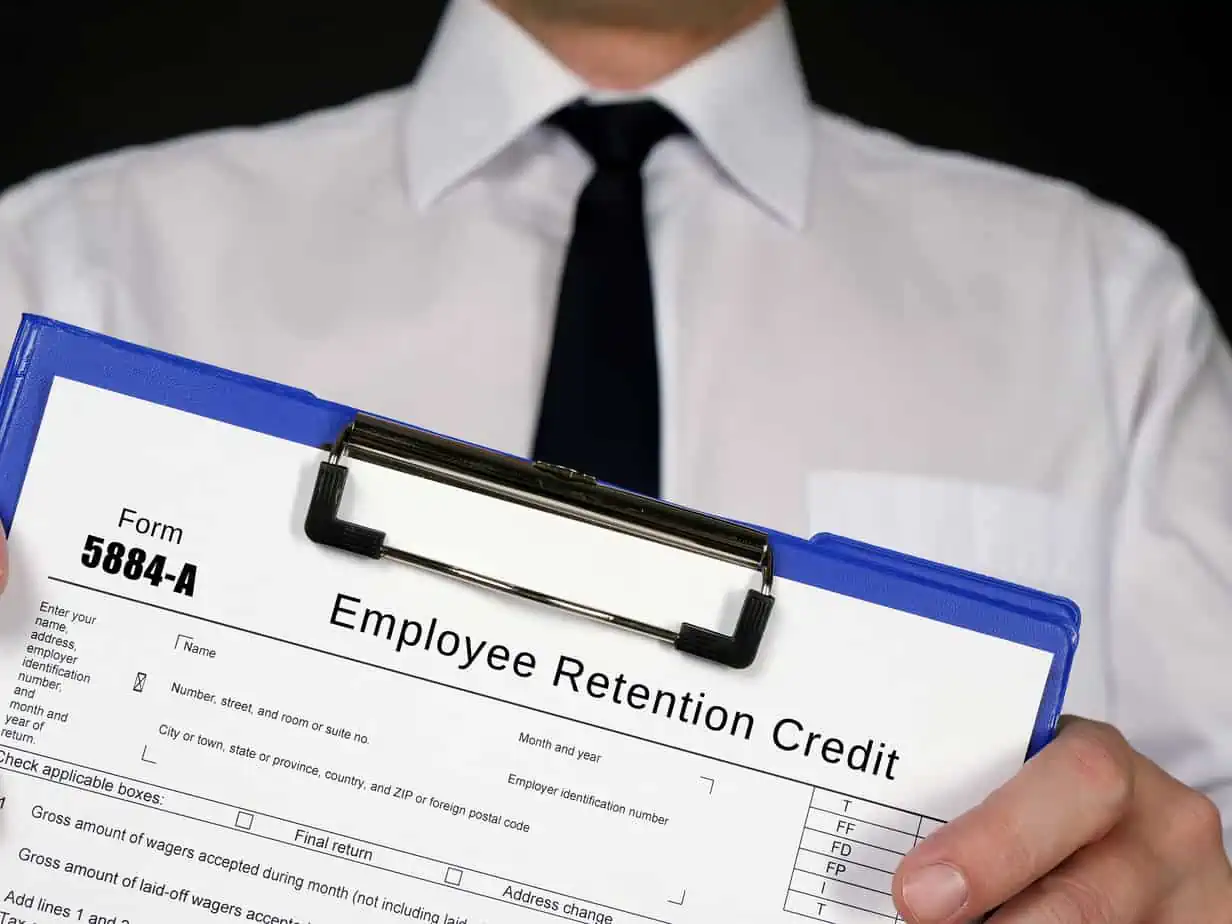Introduction
In today’s day and age more than ever it has become crucial for businesses to retain their employees. After all, it is one of the main factors that allow companies to maintain operational consistency and drive growth. Most businesses reach out to a tax professional to determine their eligibility to claim the Employee Retention Tax Credit calculations and file Form 941-X with assistance to send to the IRS. It is crucial to work with the assistance of a tax expert in order to be certain you are receiving professional help and that you are filing for the maximum eligible tax credit.
Once you dive into Employee Retention Credit tax credit calculations, not everything may appear straightforward and that’s very normal. In fact, this is especially true for businesses that employ a lot of staff and aren’t certain about paid wages that are eligible for the credit. This can create more confusion around forms that employers need to obtain, fill out, and submit and how each individual form impacts your claim.
ERC Eligibility Requirements and Considerations
With the help of a tax professional, you can learn more in-depth about the Employee Retention Credit calculations and get tax consulting as well as filing services. The assistance of a tax expert will also help you better understand your company’s situation which will be unique.
If you have a medium to large size business, it is important to get the help of a tax expert when making ERC calculations. In fact, if you are attempt to file these on your own, you likely to be overwhelmed by the nuances of the employee retention tax credit calculations.
Remember, the IRS created the Employee Retention Credit Worksheets to make it easier for businesses to calculate their qualifying tax credits. However, the IRS states that employers don’t have to attach their calculated worksheet on Form 941. There is a dedicated calculator that simplifies ERC calculations when you fill out your From 941.

What are Employee Retention Tax Credit Calculations Worksheet?
You can access the IRS-listed worksheets without any charge directly on their website. With these worksheets, you can calculate your potential tax credit. Depending on the purpose, employers can utilize five different types of ERC worksheets. The different types of Form 941 Employee Retention Credit worksheets are available for download listed below.

Worksheet 5: Calculating Adjusted COBRA Premium Assistance Credit
Employee Retention Credit Eligibility Considerations
One of the first considerations for employers should be to file the correct form. Otherwise, it is not going to be processed by the IRS. Businesses need to use Form 941-X to claim and make employee retention tax credit calculations. Apart from Form 941-X, employers also need to file their quarterly amended payroll tax returns. Make sure to fill out the correct information and submit it to the IRS.
When it comes to claiming ERC, one of the main considerations for employers is to file in the next three years. In most cases, businesses want to tap into the Employee Retention Credit as soon as possible to recoup payroll expenses and support their business operations. Remember, three years is the date from your original filed tax return. This means you can file the claim for your ERC until 2024 and make the most out of the ERC initiative.
If you’re not sure about some elements of claiming ERC and whether or not you’re eligible, reach out to a tax expert who helps claim ERC retroactively. Most employers get the help of a tax specialist to get the answers to specific questions and expand their understanding of ERC and how it can benefit their business in the short and the long term.
The Need to Calculate Your Employee Retention Credit
Businesses need to determine their ERC eligibility before they can run the hypothetical calculations. A lot of business information, like taxes and finances, may seem overwhelming, but it helps you determine your ERC eligibility faster and make accurate calculations. ERC worksheets help employers navigate different aspects of calculations.
So, how do you calculate the employee retention tax credit? Well, the traditional way to crunch the ERC numbers can take a lot of time, but with the right worksheet, you can be more certain about your expectations from the Employee Retention Credit.
The main benefits of leveraging the ERC worksheet for calculations include the following:
- Get the information to the tax professionals for verification and file forms applicable to you
- Figure out the maximum credit limit for 2020 and 2021
- Determine and confirm if you’re eligible to claim ERC
- Be specific about which wages and quarters are eligible

Essential Steps for Employee Retention Credit Worksheet Calculations
It can be daunting to jump back and forth between worksheets and make sense of which information applies to you and which information you need to input. The solution is to take strategic steps when you make Employee Retention Credit worksheet calculations.
Take your time and see how the employee retention tax credit works because there are different guidelines for 2020 and 2021 to file for the credit. It might be a good idea to take a piece of paper and make some notes about the Employee Retention Credit calculations.
Let’s walk you through the main steps to make ERC worksheet calculations.
Step 1 – Determine Employee Retention Credit Eligibility
There’s an employee threshold you need to qualify for specific tax credits. But if you hadn’t hired full-time or part-time W2 employees in 2020 and 2021, you do not qualify to claim any ERC tax credit.
2020
ERC eligibility requirements in 2020 include operational status prior to February 16, 2020. Employers should have had 500 or less full-time employees in a particular quarter. It also includes a government order that led to the partial or complete shutdown of business operations amid the COVID-19 pandemic. During an applicable quarter, ERC would kick in if a business suffers a loss of 50% in gross receipts as compared to 2019.
2021
ERC eligibility requirements for 2021 are mostly the same as 2020. But the loss of gross receipts should be at least 20% to qualify for the employee retention tax credits for a qualifying quarter compared to 2019.
Step 2 – Determine Eligible Quarters
Unlike in 2020, there are more qualifying ERC opportunities for employers. You can calculate your ERC with aggregated 2021 data. You can also make quarterly 2021 calculations separately. Anyhow, employers can get eligible expenses and wages of $10,000 for each quarter.
The tax credit can be more than 70% of the total expenses and wages. In total, employers can claim over $28,000 of tax credits per employee in a single year. Contrary to what you may have heard, not every business is eligible to claim ERC.
But on the bright side, most employers are eligible to avail employee retention tax credit and run worksheet calculations. Once you determine your eligibility, you need to meet paid wage requirements for a specific period.
2020
- Qualified expenses and wages paid in Q2 March 13 – June 30, 2020
- Qualified expenses and wages paid in Q3 July 1 – September 30, 2020
- Qualified expenses and wages paid in Q4 October 1 – December 31, 2020
2021
- Q1 January 1 – Match 31, 2021
- Q2 April 1 – June 30, 2021
- Q3 July 1 – September 30, 2021
- Q4 is reserved for recovery small businesses: October 1 – December 31, 2021
Step 3 – Determine Potential Qualifying Closure
From small businesses to mid-size enterprises to large corporations, most businesses can qualify for employee retention tax credits. ERC applies to the majority of businesses that had faced a tough time maintaining operations during COVID-19 and faced partial or complete shutdowns. In most cases, ERC applies to businesses that saw a 50%-70% decline in their 2020 gross receipts compared to 2019.
Step 4 – Review Eligible Wages of Every Year
Include eligible expenses and wages for employees’ health plans throughout the eligible periods. This is the time when your business was either partially or completely closed and significantly impacted your gross receipts.
Step 5– Determine Company Status
A lot can change if you’re a recovery startup enterprise. But how does one determine a recovery startup business status? It applies to entities that have lower than $1 million in gross receipts and started business operations after February 15, 2020.
Step 6 – Make Employee Retention Calculations
Your limit for eligible paid wages is $10,000 for each employee. Since employers can secure more than 50% of this amount, they can claim ERC of $5,000 for each employee a year. In 2021, a limit on eligible wages is $10,000 for each full-time employee a quarter rather than a year.
This allows employers to recoup 70% of these paid wages. You can claim ERC of $7,000 for each worker per quarter, which rounds up to $21,000 a year. But if you’re a recovery startup or small business, you can get an annual amount of $28,000 for each employee.
Step 7 – Check Employee Retention Credit Refund Eligibility
The Employee Retention Credit is designed to help business recoup payroll tax that was paid to the IRS for full-time and part-time employees that we’re retained through the pandemic in 2020 and 2021. You can only claim an advance round of ERC refund if you had employed 500 or less full-time employees in 2021. Your credit amount should also be higher than your employment tax deposits for a specific period. Lastly, report all the compiled data on Form 941-X.
Wrapping Up
Amid the COVID-19 crisis, many businesses struggled to sustain operations and continued to grow. This is the main reason the Employee Retention Credit program became a savior for a lot of small businesses during the pandemic and is still relevant today. Claiming the Employee Retention Credit is more accessible than other COVID-19-based relief grants, loans, and relief options. Be sure to utilize the ERC worksheet as a tool to calculate if you have any applicable tax credits from 2020 or 2021.

